#Evesham abbey
Explore tagged Tumblr posts
Text
The Dingleys of Cropthorne
While visiting Evesham for last year’s medieval re-enactment, I happened on the village of Cropthorne, with its large medieval church. I do a fair bit of church-crawling, and this was a fine specimen, built near the sites of a Saxon hunting lodge and containing a 9th century Saxon cross. It also had some interesting 17thc monuments to a family called Dingley or Dineley (earlier records use the…

View On WordPress
#Constance of York#cropthorne#Edward Dingley#Edward I#Edward III#elizabeth bigge#Evesham Abbey#Francis Dingley#Joan Beaufort#Joan of Acre#John of Gaunt#Katherine Swynford#Mary Neville#Ralph Earl of Westmorland#re-enactment#Saxon churches
0 notes
Text
30th December
St Egwin’s Day/ Five Gold Rings

Source: Handmade Charlotte website
Today is St Egwin’s Day. Egwin was a seventh century English saint about whom a number of far fetched tales are told. Denounced as a liar and a thief, Egwin proved his innocence through the unusual method of locking his own feet in manacles, walking to Rome and, when in the presence of the Pope, converting a fish he had bought into the key to his fetters. He founded Evesham Abbey and allegedly deflected a large clod of earth thrown by a jealous Satan at the new building by the power of prayer. The earth instead fell on Warwickshire where it was eventually named Meon Hill. Egwin also punished a group of ungodly blacksmiths who were rude to him by giving them tails. What allegories lie behind these odd stories are very difficult to discern.
Today is also the Fifth Day of Christmas on which, according to the old carol The Twelve Days of Christmas, the singer’s true love presents him or her with Five Gold Rings. The song originated as a Christmas game in which singers were required to remember and recite the growing number of daily gifts, and failure to do so resulted in elimination from the game. The first line ‘a Partridge in a Pear Tree’ is likely to be a mishearing: the original line was ‘a Part of a Juniper Tree’, a plant that gives off a sweet smell when burnt and apparently wards off evil spirits, which is a rather more logical Christmas gift than the famous partridge sitting in its pear tree.
#st egwin#Evesham abbey#meon hill#the twelve days of christmas#five gold rings#christmas#partridge in a pear tree
1 note
·
View note
Text
Leicester Tower and Obelisk, Evesham, Worcestershire
The Battle of Evesham took place on a site near the town in 1265, but it was several centuries later that two memorials to the hero of the hour, Simon de Montfort, Earl of Leicester, were erected. In 1842 Edward Rudge, a civic figure, botanist and antiquary, built a tower and obelisk in the grounds of his home and dedicated them to the battle and the earl. Continue reading Leicester Tower and…

View On WordPress
#Abbey manor House#Almonry Museum#Battle of Evesham#Earl of Leicester#Edward Rudge#Evesham#Leicester Tower#Simon de Montfort#Worcestershire
0 notes
Text
HENRY III OF ENGLAND
HENRY III OF ENGLAND
1 October 1207 – 16 November 1272
Henry III was the son of King John who he succeeded in 1216, aged 9.
He didn’t rule solo until 1227 when he came of age. When he did so, he was considered a weakling who gained little respect. His one achievement was the rebuilding of the present-day Westminster Abbey. His reign saw extravagance and civil war. He reigned for 56 years and was married to Eleanor of Provence; they had four sons and two daughters. Henry took administration into his own hands which resulted in a period of poor government.
A baron from a family of Lundy Island (Devon) plotted to have Henry III killed. The plot was discovered, and the baron was executed at the Tower of London. He was hung, drawn, and quartered. First, he was dragged to the tower by a horse’s tail.
In 1265 in Sussex, Henry III’s cook got into an argument with local villagers, so they killed him. In a vengeful reaction, Henry picked 300 people at random from the village, had them taken to a field and they were all beheaded.
The barons rebelled and Henry was defeated at Lewes, his brother-in-law Simon de Montfort ruled the country until he was defeated and killed at Evesham in 1265. For the rest of his reign, the kingdom was governed by Henry’s son Edward (Edward I). Henry died in 1272, aged 65 and was succeeded by his son.

#HenryIIIofEngland #HenryIII
0 notes
Text
It's time for a new Bradecote and Catchpoll historical mystery. I'm reviewing Litany of Lies by Sarah Hawkswood
It's time for a new Bradecote and Catchpoll historical mystery. I'm reviewing Litany of Lies by Sarah Hawkswood #histfic #historicalmystery #newrelease
Here’s the blurb Midsummer, 1145. Walter, the steward of Evesham Abbey, is found dead at the bottom of a well pit. The Abbot, whose relationship with the lord Sheriff of Worcestershire is strained at best, dislikes needing to call in help. However, as the death appears to have not been an accident, he grudgingly receives Undersheriff Hugh Bradecote, Serjeant Catchpoll and Underserjeant…

View On WordPress
0 notes
Text

Evesham Abbey Precincts
Monastic remains and St. Lawrence's tower. This arch was the entrance to the chapter house from the cloisters, and forms part of the boundary to the present-day allotments! Evesham, Worcestershire.
1 note
·
View note
Text
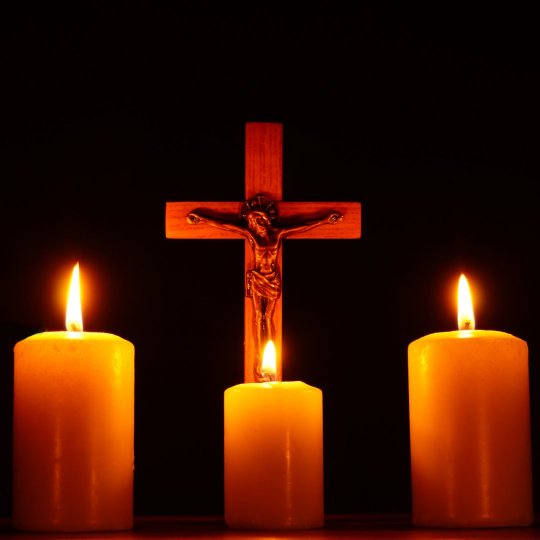
SAINTS JANUARY 19
STS. MARIUS, MARTHA, AUDIFACE AND ABACHUM, MARTYRS ON THE VIA CORNELIA, Marius and his two sons were beheaded on the Via Cornelia and their bodies were burned. Martha was murdered in a place called Nymphae Catabassi, thirteen miles outside of Rome. Jan 19
ST. GERMANICUS MARTYR OF PHILADELPHIA Jan 19
St. Canute IV Martyred Roman Catholic king of Denmark, sometimes called Knud. The illegitimate son of King Sven II Estridson of Denmark, Canute succeeded his brother Harald III Hen in 1081. After marrying Adela, the sister of Count Robert of Flanders, Canute built churches and monasteries. In 1085, he planned an invasion of England, but the nobles of the court rebelled against him and forced him to flee to the isle of Funen. There, Canute, his brother Benedict, and seventeen companions were slain in the church of St. Alban Feastday Jan 19
ST. JOHN, BISHOP OF RAVENNA St John was Bishop of Ravenna at a time when the whole country was being devastated by the war with the Lombards. He was a holy pastor, entirely dedicated to caring for the needs of his people and his church. Pope Gregory the Great’s book, “The Rule for Pastors” to him. He died in 595. Jan 19
St. Fillan. A son of Feriach and St. Kentigerna, was also known as Foelan. He became a monk in his youth and accompanied his mother from Ireland to Scotland where he lived as a hermit near St. Andrew's monastery for many years, and then was elected abbot. He later resigned and resumed his eremitical life at Glendochart, Pertchire, where he built a church and was reknowned for his miracles. Various legends attribute the most extravagant miracles to him, such as the one in which his prayers caused a wolf that had killed the ox he was using to drag materials to the church he was building, to take the ox's place. Fillan died on January 19…
St. Henry of Sweden. Henry was an Englishman of the twelfth century residing at Rome. In 1152, he was consecrated Bishop of Uppsala, Sweden, by the Papal Legate Nicholas Breakspear, who later became Pope Adrian IV. In 1154, St. Eric, King of Sweden, led a punitive expedition against the Finns in retaliation for their marauding activity into Sweden, and Henry accompanied him. Eric offered peace and the Christian Faith to the people of Finland, but they refused. A battle ensued and the Swedes won. Henry baptized the defeated people in the Spring of Kuppis near Turku. When Eric returned to Sweden, Henry remained behind, working to convert more of the Finns. To this end he built a church at Nousis, which became his headquarters. In time, Henry met a violent death on account of his love of God. A converted Finnish soldier named Lalli had murdered a Swedish soldier. After careful consideration of the facts and assiduous prayer, Henry imposed the penalty of excommunication on the murderer. Lalli became enraged and slew the saintly bishop with an ax. Henry was buried at Nousis, and miracles were reported at his tomb.
St. Branwallader, 6th century. Bishop of Jersey, England. A part of his remains were translated by King Athelstan in 935.
St. Wulfstan, 1095 A.D. Wulfstan (1008-1095) A Bishop and reformer, also called Wulstan and Wolstan. Born at Long-Itch ington, Warwickshire, England, he studied at the abbeys of Evesham and Peterborough, received ordination, and joined the Benedictines at Worcester. Wulfstan served as treasurer of the church at Worcester, was prior of the monastery, and finally was named bishop of Worcester in 1062. After overcoming initial doubts about his ability to hold the office of bishop, he demonstrated such skill after the Norman Conquest that he was the lone bishop to be kept in his post by William the Conqueror (r. l066-l087). For the next three decades, Wulfstan rebuilt his cathedral, cared for the poor, and struggled to alleviate the harsh decrees of the Normans upon the vanquished Saxons. Wulfstan died while engaged in the daily ritual of washing the feet of a dozen poor men. He was canonized in 1203.
St. Nathalan. Hermit and bishop of Tullicht, best known for his miracles. A Scot born to a noble family near Aberdeen, he became a hermit and performed miracles during a famine. Later he became a bishop, and during one visit to Rome was consecrated by the Holy Father. He returned to Tullicht, where he built churches and conducted missionary activities.
0 notes
Text
A-T-3 292 Jim Capaldi - Don't Let Them Control You
Evesham, good charity shop run, old abbey, Simon De Montford died there, Jim Capaldi was born there
I'm reading Alan Moore's love letter to Northampton (50ish miles east of Evesham,) his novel Jeruselem. I'm enjoying it a lot but it's Moores mention of the Second Baron's War which one side was led by the complicated (downright racist French born why is there a university named after him) Simon De Montford against King Henry III which I've read a little bit about and has led me to take some of the other details (historical or not - like Moore claiming Northampton as the centre of England, it's part of the middle for sure but it's way off the centre) with a pinch of salt
Anyhow, Jim Capaldi and Dave Mason befriended Steve Winwood whilst Spencer Davis Group and Capaldi/Mason's group The Hellions were playing in Hamburg, Germany. Winwood, Capaldi, Mason would jam after hours back at the Elbow Room in brum and this became Traffic. These guys were the main writers for Traffic
Don't Let Them Control You is from Capaldi's eighth solo studio album Fierce Heart which saw his return to commercial success in the US. Fierce Heart is dedicated to Rebop Kwaku Baah who was also in Traffic and later Can and Dunkelziffer, he'd sadly passed away in January 1983
youtube
0 notes
Photo

Joseph Mallord William Turner, Arch of the Old South Abbey, Evesham (1793)
1 note
·
View note
Photo
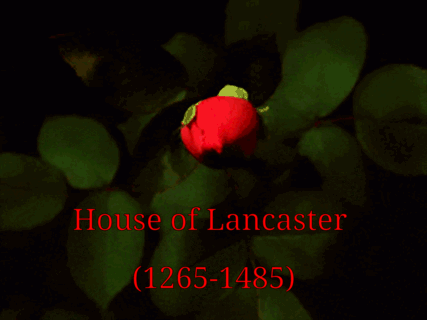
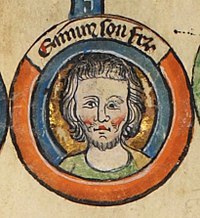





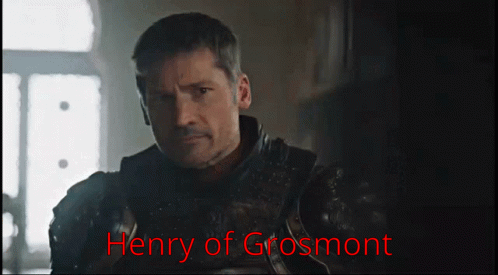
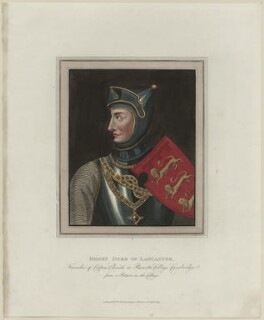
“The Houses of Plantagenet and Lancaster had not always been united. The Duchy of Lancaster - as it was later called - had emerged in the thirteenth century at the end of the Second Barons' War and death of the rebel Lord Simon de Montfort at Evesham.
The youngest son of Henry III, Edmund Crouchback, inherited de Montfort Earldom of Leicester and, later, Lancaster. By 1269, Edmund was on track to become an incredibly wealthy territorial magnate, like all who would succeed him.
Edmund, Earl of Lancaster, was a popular prince a capable and pious soldier - nicknamed Crouchback due to the motif of the cross he bore on his shield and wore on his back whilst on crusade.
He was fiercely loyal to his brother King Edward I (Longshanks'), fighting in his various wars across Scotland and France and overseeing extensive Plantagenet castle-building projects in Wales.
Over time Edmund accumulated a series of dignities, land and property. By the end of his life he was extremely powerful, with land dotted throughout the realm. After Edmund's death in Bayonne in 1296, he was interred at Westminster Abbey and his wealth distributed among his children: Thomas, Henry and John. Thomas inherited the title Earl of Lancaster. At the end of the thirteenth century, the relationship between the house of Lancaster and the Plantagenets was positive.
After Edward II ascended the throne, he immediately bestowed a royal title - Earl of Cornwall - on his favourite (and suspected lover) Piers Gaveston. This instantly sparked massive opposition from the nobility, and Thomas of Lancaster became a leading player in an uprising against the King and his favourite. In an unforgiving dispute, Gaveston was eventually caught and executed on Lancaster's lands near Kenilworth, infuriating the King and leading him to call Thomas of Lancaster a rebel and a traitor.
After Gaveston's death, domestic politics was turned on its head: Thomas of Lancaster exercised his authority and undermined the King. He refused to serve in the war against the Scots, and went so far as to agree to a personal truce with the Scottish lords, working under the pseudonym King Arthur. After years of growing animosity between the cousins, an influential noble family - the Despensers - rose to prominence at court and helped Edward Il seek retribution.
Edward II had never forgiven his cousin for Gaveston's murder and, in 1322, finally took his revenge. Thomas of Lancaster was arrested after the Battle of Boroughbridge and tried for treason - with the Despensers and the King as members of the tribunal. A week after his arrest, Thomas of Lancaster, dressed in an old surcoat, was carried on a donkey a mile from Pontefract Castle, where he was executed. The only mercy extended was that he was at least spared the prescribed fate of a convicted traitor, that of being hung, drawn and quartered.
As he was of royal blood, he was granted death by beheading. After Thomas’s conviction and execution as a traitor, Lancastrian loyalty was called it into question: that historical mistrust would haunt John of Gaunt throughout his political and personal life.
When Gaunt inherited the Lancastrian lands, nearly forty years later, it was claimed that blood trickled from Thomas of Lancaster's tomb - a grim omen of an uncertain dynastic future.
Thomas became a posthumous icon, which perhaps made the Lancastrian position all the more dangerous. Shortly after his death, cult began to emerge around his effigy, said to induce miracles-even his hat was believed to cure headaches. By the time Henry- his younger brother and heir to the Lancastrian lands - installed a memorial cross for the murdered Thomas, the dead Earl had achieved a significant following, with three attempts to have him canonised.
With Edward Il pitted against his Queen, Isabella, and her lover Roger Mortimer, the dynastic future of England was precarious. The Lancastrian administration, however, remained constant. Whilst the royal family were embroiled in a bitter feud, Henry, Earl of Lancaster, invested in Leicester as the heart of Lancastrian affairs. He renovated Leicester Castle but his greatest project was in the south-west of the town, the Newarke - a hospital and church - that employed generations of local labourers.
From 1330, Henry of Lancaster created a home to the Lancastrian dynasty in Leicestershire and brought the previously quiet town of Leicester to the forefront of English consciousness. Henry was popular in Leicester; the citizens of the town respected him and he carefully considered their needs, even endowing funds for a public latrine, for the ease of all the said community. Yet it was his large building projects in Leicester thar benefitted local people most significantly. This positive relationship with the town continued with his son Henry of Grosmont, the future Earl of Derby, Duke of Lancaster and father in law of John of Caunt.
Over the course of his flowering career, and even after being raised to his Dukedom, Henry of Grosmont never shirked his feudal responsibility in Leicester, and the relationship between people and magnate remained steadfast. By the time Gaunt inherited the town, Leicester was unbendingly loyal to Lancaster.”
CARR, Helen. In: The Bleeding Tomb: a Lancastrian Inheritance. The Red Prince John of Gaunt duke of Lancaster. 2021.
Fan casting: Sean Bean as Edmund ‘Crouchback’; Adam Driver as Thomas of Lancaster; Aneurin Barnard as Henry of Lancaster; Nicolaj Coster Waldau as Henry of Grosmont. *
*please notify if these gifs were used inappropriatedly; not mine to claim just to illustrate the characters.
#house of lancaster#henry of lancaster#thomas of lancaster#edmund crouchback#edmund plantagenet#house of plantagenet#Plantagenets#lancastrians#simon de montford#sean bean#aneurin barnard#adam driver#nicolaj coster waldau
19 notes
·
View notes
Text
Imagine being a monk, fishing on the docks of Evesham Abbey, when you hear singing. You look up and coming down the swan-road is the Raven Clan's great longship, full sail at high speed. You can see Eivor Wolfkissed up on the back sternpost, her eyes focused on the horizon. You're a little scared at first, but they are moving so fast and singing joyously, you think they're going to fly right past you.
And as the longship passes you hear one of the crew shout "Look there!" And then Eivor Wolfkissed seems to snap out of a day dream and shouts "Save it for later!" and the crew abruptly stops singing. The ship already past the dock drops it sail. The crew scramble for their oars and you watch as the ship jerks and sways. It's struggling to turn around and it initially starts going towards the opposite bank of the river.
Eivor shouts "No! Left! Go left! My left! Arh! We're already half way around, just keep going! We'll circle around."
The ship actually goes left this time and then stops and sways side to side again. The vikings seem disoriented but seem too aware of their surroundings to be drunk.
Eivor again, "Just back up! Back up!"
The ship begins to rapidly back up and slams against the dock. Someone in the crew yells at Eivor, "Hey! What do you think you are doing!?" As if it's somehow her fault.
They could have jumped out by now, but they don't. Maybe they are drunk? Mushrooms? You've heard that story about Eivor fighting squirrels in that shepherd's field.
The abbey guards crowd around the dock, one shouts, "God loves me!!" They begin to throw spears and shoot arrows as the ship grinds it's side against the dock. The perfect place to get out, perfectly aligned with the dock, and yet the heathens still refuse. The ship finally swings around, facing towards the dock, and it's as if they found the perfect spot. Eivor blows a horn and the ship slams forward against the dock, you're nearly knocked back by the force. The vikings cheering, jump over the sides into the water and struggle to either climb onto the dock or move around it to the bank. Eivor jumps up onto the lowered yard to swiftly cross to the front of the ship, but slams into the mast and looks at it bewildered for a moment.
You think you should have taken the chance to run and yet you're unafraid. You just keep fishing even though the fish are probably miles away. The vikings defeat the guards on the dock with ease and they run up hill into the tiny abbey you call home, chanting "Odin! Odin! Odin!" You just stay exactly where you are. This is a miracle from God, you're faith is protecting you. You can hear screams and explosions coming from behind you, you smell ash in the air, but like Lot you don't dare turn around.
Then the screaming and explosions stop, and you hear Eivor shout "We're done here!" A horn blows, you hear laughter and rattling metal behind you as the vikings return. They file around the dock, into the water, carrying two large chests of wealth. They struggle to get them up the side into the boat, their feet slipping on the river rocks and one of them is nearly crushed into the water. None of them pay you any mind.
Miracle of God, you are invisible!
Then you feel a firm hand on you shoulder. You turn to see Eivor's beautiful, resting bitch face splattered with blood and you think briefly that you are going to die. But you have the strength of God on your side and you manage to keep your calm composer. Wait are you turned on right now?
"Hey, do you know how to get to Buckingham from here? We've been circling for a day now"
You clear your throat, "Continue south, to the next river east. Keep going east, you can not miss it."
Her cold, bloody face breaks into a warm smile and she pats your back, "Thanks! I appreciate it."
She jumps onto the side of the boat, runs along it towards the back, kicking a couple of her crew in the head as she passes. You've completely missed how they got into the boat with those massive chests. The crew cheers as they get the oars back out and the boat rapidly backs up. The boat sways a moment and someone shouts "Can't use the sail here!" Then Eivor shouts "Strike up a tune!" The boat sways into place, facing south, a lute begins to play, the sail lifts, and off they go.
#ac valhalla#fanfiction#eivor wolfkissed#this is just my personal experience#should have screenshoted the monk just fishing on the dock unphased by Eivor's raiding
344 notes
·
View notes
Photo

Evesham Abbey belltower, Worcestershire
and church of St Lawrence
49 notes
·
View notes
Text
Today, the Church remembers St. Wulfstan, Bishop.
Ora pro nobis.
Wulfstan was born about AD 1008 at Long Itchington in the English county of Warwickshire. His family lost their lands around the time King Cnut of England came to the throne. He was probably named after his uncle, Wulfstan II, Archbishop of York. Through his uncle's influence, he studied at monasteries in Evesham and Peterborough, before becoming a clerk at Worcester. During this time, his superiors, noting his reputation for dedication and chastity, urged him to join the priesthood. Wulfstan was ordained shortly thereafter, in AD 1038, and soon joined a monastery of Benedictines at Worcester.
Wulfstan served as treasurer and prior of Worcester. When Ealdred, the bishop of Worcester as well as the Archbishop of York, was required to relinquish Worcester by Pope Nicholas, Ealdred decided to have Wulfstan appointed to Worcester. In addition, Ealdred continued to hold a number of the manors of the diocese. Wulfstan was consecrated Bishop of Worcester on 8 September 1062, by Ealdred. It would have been more proper for him to have been consecrated by the Archbishop of Canterbury, whose province Worcester was in. Wulfstan had deliberately avoided consecration by the current archbishop of Canterbury, Stigand, since Stigand's own consecration had been uncanonical. Wulfstan still acknowledged that the see of Worcester was a suffragan of Canterbury. He made no profession of obedience to Ealdred, instead offering a profession of obedience to Stigand's successor Lanfranc.
Wulfstan was a confidant of Harold Godwinson, who helped secure the bishopric for him.
A social reformer, Wulfstan struggled to bridge the gap between the old and new regimes, and to alleviate the suffering of the poor. He was a strong opponent of the slave trade, and together with Lanfranc, was mainly responsible for ending the trade from Bristol.
After the Norman conquest of England, Wulfstan was the only English-born bishop to retain his diocese for any significant time after the Conquest (all others had been replaced or succeeded by Normans by 1075). William noted that pastoral care of his diocese was Wulfstan's principal interest.
In AD 1072 Wulfstan signed the Accord of Winchester. In AD 1075, Wulfstan and the Worcestershire fyrd militia countered the Revolt of the Earls, when various magnates attempted a rebellion against William the Conqueror.
Wulfstan founded the Great Malvern Priory, and undertook much large-scale rebuilding work, including Worcester Cathedral, Hereford Cathedral, Tewkesbury Abbey, and many other churches in the Worcester, Hereford and Gloucester areas. After the Norman Conquest, he claimed that the Oswaldslow, a "triple hundred" administered by the bishops of Worcester, was free of interference by the local sheriff. This right to exclude the sheriff was recorded in the Domesday Book in AD 1086. Wulfstan also administered the diocese of Lichfield when it was vacant between AD 1071 and 1072.
As bishop, he often assisted the archbishops of York with consecrations, as they had few suffragan bishops. In AD 1073 Wulfstan helped Thomas of Bayeux consecrate Radulf as Bishop of Orkney, and in AD 1081 helped consecrate William de St-Calais as Bishop of Durham.
Wulfstan was responsible for the compilation by Hemming of the second cartulary of Worcester. He was close friends with Robert Losinga, the Bishop of Hereford, who was well known as a mathematician and astronomer.
Wulfstan died 20 January 1095 after a protracted illness, the last surviving pre-Conquest bishop. After his death, an altar was dedicated to him in Great Malvern Priory, next to Cantilupe of Hereford and King Edward the Confessor.
At Easter of AD 1158, Henry II and his wife Eleanor of Aquitaine visited Worcester Cathedral and placed their crowns on the shrine of Wulfstan, vowing not to wear them again.
Wulfstan was canonized on AD 14 May 1203 by Pope Innocent III.
Almighty God, your only-begotten Son led captivity captive and gave gifts to your people: Multiply among us faithful pastors, who, like your holy bishop Wulfstan, will give courage to those who are oppressed and held in bondage; and bring us all, we pray, into the true freedom of your kingdom; through Jesus Christ our Lord, who lives and reigns with you and the Holy Spirit, one God, for ever and ever.
Amen.

#father troy beecham#christianity#troy beecham episcopal#jesus#father troy beecham episcopal#saints#god#salvation#peace
4 notes
·
View notes
Text
The Emirates FA Cup - Competitions | The Football Association
Fa cup fixtures results and table - Soccer: FA Cup / live - results, fixtures, standings -
Guiseley - Matlock Town. Southport - South Shields. Wimborne Town - Maidstone. Sholing - Walton Casuals. Hartley Wintney - Barking. Burnham - Whyteleafe. Havant and Waterlooville - Horsham. Concord Rangers - Potters Bar Town. Christchurch - Gloucester City. Tiverton - Taunton Town. Gosport Borough - Hereford.
Bath City - Winchester City. Wimborne Town - Melksham Town. Kidlington - Bristol Manor Farm. Frome Town - Larkhall Athletic. Saltash United - Sholing. Truro Fa cup fixtures results and table - Hungerford Town. Weston Super Mare - Swindon Resullts. Bracknell Town - Resluts. Hanwell Town - Hartley Wintney. Moneyfields FC - Cray Wanderers.
Ebbsfleet United - Hastings. Sheppey United - Welling United. Bedfont Sports Club - Carshalton Anf. Dorking Wanderers - Eastbourne Borough.
Chipstead - East Grinstead Town. Corinthian Casuals - Dulwich Hamlet. Haringey Borough - Chertsey Town. Folkestone Invicta - Chatham Town.
The Emirates FA Cup
Hendon - Maidstone. Farnborough - Tonbridge Angels. Dartford - Slough Town. Bury Town - Waltham Abbey. Peterborough Sports - Stansted. Kettering Town FC - Chelmsford. Brantham Athletic - Aveley. Cheshunt - Cambridge City. Barking - Kings Langley FC. Hashtag United - Braintree Town.
St Albans - Hitchin Town. Walthamstow - Hornchurch. Leighton Town - Leiston. Grantham Town - Matlock Town. Leamington - Banbury United. Worksop - Chester FC. Ilkeston FC - Hanley Town. Brackley Town - Billericay. Canvey - Biggleswade FC.
Tamworth - Evesham United. Chasetown - Telford. Alvechurch - Kidderminster Harriers. Nantwich Town - Barwell FC. Mickleover Sports - Newark. Buxton - Stafford Rangers. Coalville Town - Alfreton Town. Hednesford - Halesowen. Warrington Rylands - York City. Skelmersdale United - Lancaster City.
Southport - Morpeth Town FC. Stalybridge - Longridge Town. Runcorn Linnets - Marine. Fa cup fixtures results and table United - South Shields. Curzon - FC United of Manchester. Darlington - Prescot Cables. Chorley - Gateshead FC. Guiseley - Atherton Collieries. Cray Wanderers - Fisher. Highworth Fa cup fixtures results and table - Melksham Town.
Tiverton - Bideford AFC. Kidlington - Salisbury. Grays Athletic - Potton United. Worcester - Stafford Rangers. Skelmersdale United - Bootle. Lowestoft Town - Aveley. Corinthian - Sevenoaks Town. Christchurch - Dorchester Town. Tadley Calleva - Truro City. Cambridge City - Stowmarket Town. Frimley Green - Marlow. Cobham - Risborough Rangers. Steyning Town - Sheppey United. Chichester City FC - Cribbs.
Fairford Town - Sholing. Chatham Town - Southall. Longridge Town - Charnock Richard. Tadcaster Albion - Litherland Remyca. West Bridgford - Halesowen. Coventry Sphinx - Ilkeston FC. Shifnal Town - Alvechurch. Hanley Town - Redditch United. Ely City - Biggleswade FC.
Whitby - Warrington Rylands. West Auckland Town - Runcorn Fa cup fixtures results and table. Saltash United - Cirencester Town. Swindon Supermarine - Shepton Mallet. Yate Town - Bristol Manor Farm. Barnstaple Town - Wimborne Town. Winchester City - Clevedon. Taunton Town - Wantage Town. Aylesbury United - Moneyfields FC. South Park - Bognor Regis Town. Merstham - AFC Dunstable. Chertsey Town - Leatherhead. Chalfont St Peter - Farnborough.
Hastings - Chesham United. Bedfont Sports Club - Lewes. Ashford United - Bracknell Town. Haywards Heath Town - Hanwell Town. Haringey Borough - Tunbridge Wells. Little Common - Corinthian Casuals. Leighton Town - Mildenhall Town. Barking - Dunstable Town FC. Brantham Athletic - St. Ives Town FC. Burnham - Northwood.
Horsham - Kingstonian. Whyteleafe - Binfield. Chipstead - Deal Town. Staines Town - Walton Casuals. Long Melford - Cheshunt. Leiston - Biggleswade Town. Peterborough Sports - Enfield Town. Harlow Town - Waltham Abbey. Royston Town - Wroxham. Dereham Town - Canvey. Tividale - Nantwich Town. Barwell FC - Bedworth United. AFC Mansfield - Gainsborough.
Coalville Town - Sheffield FC. Buxton - Belper Town. Daventry Town - Evesham United. Bromsgrove Sporting - Stratford Town. Walthamstow - St. Bury Town - Brightlingsea Regent. Chasetown - Basford United. Banbury United - Carlton Town. Westfield FC - Worksop. Grantham Town - Rushall Olympic. Fa cup fixtures results and table Town - Mickleover Sports.
Quorn - Matlock Town. Stalybridge - Bishop Auckland. Hednesford - Long Eaton United. Tamworth - Stourbridge. Marske United - Trafford. West Allotment Celtic - Hyde United. Coggeshall Town - Stansted. Radcliffe - Workington. Scarborough Athletic - Ashton United. Frickley Athletic - Marine. Southampton's clash with Shrewsbury Town was postponed after a number of positive Covid tests among the League One outfit's players and staff. The first round proper of FA Cup kicked off on November 6, with games also being played on November 7, 8 and 9.
A total of 48 clubs from League One fa cup fixtures results and table League Two enter at this phase of the competition as they join the 31 winners of the previous round along with the bye recipients - on this occasion, Chorley Town. Fa cup fixtures results and table clubs joined the 32 winners from the qualifying stages of the competition, which got underway at the end of August and concluded on November 4.
It will be held at the traditional venue of Wembley in London. Both networks air the final and share the rest of the competition, taking turns to select the games they wish to broadcast. All matches shown by the BBC and BT Sport will be available to stream on their respective websites and apps, while a number will be exclusively online.
That means the games are not strictly being shown live on television in the US. FA Cup. Arsenal 2. Newcastle United 0. Bournemouth 4. Oldham 1. Blackburn 0. Doncaster 1. Blackpool 2. West Bromwich Albion 2. Sheffield United 3. Burnley 1. Exeter 0. Sheffield Wednesday 2. Queens Park Rangers over at this website. Fulham 2.
Stoke 0. Get more information 4. Wycombe 4. Preston 1. Stevenage 0. Swansea 2. Derby 0. Boreham Wood 0. Millwall 2. Nottingham Forest 1. Cardiff 0. Norwich fa cup fixtures results and table. Coventry 0. Everton 2. Rotherham 1. Luton 1. Reading 0. Aston Villa 1. Liverpool 4. Wolverhampton Wanderers 1. Crystal Fa cup fixtures results and table 0. Bournemouth 2. Crawley 1.
Wycombe 1. Tottenham 4. Everton 3. Sheffield Wednesday 0. Manchester United 3. Liverpool 2. Brentford 1. Leicester 3. Fulham 0. Burnley 3. Chelsea 3. Cheltenham 1.
Barnsley 1. Norwich 0. Brighton 2. Blackpool 1. Millwall 0. Bristol City 3. West Ham 4. Doncaster 0. Swansea 5. Sheffield United 2.
English FA Cup Qualification table live
Southampton 1. Arsenal 0. Chorley 0. Barnsley 0. Chelsea 1. Wolverhampton Wanderers fa cup fixtures results and table. Everton 5.
Leicester 1. Brighton 0. Sheffield United 1. Bristol City 0. Swansea 1. West Ham 0. Burnley 0. Leicester. Southampton. Chelsea. Manchester City. View full playoff Hide full playoff. Tiverton 2. Gosport Borough 2. Metropolitan Police FC 3. Worcester 2. Stafford Rangers 3. Lowestoft Town 2. Barwell FC 3. Biggleswade Town 1. Stalybridge 3. Bishop's Stortford 1. Ives Town FC 0. Yate Town 1. Cambridge City 1. Farnborough 3. Hastings 0.
Chesham United 0. Daventry Town 0. Dorchester Town 1. Dunstable Town FC 1. East Thurrock United 0. FC United of Manchester 6. Frome Town 4. Gainsborough 0. Margate 1. Hednesford 3. Kings Langley FC 1. Nuneaton 2. Fa cup fixtures results and table Town 0. Poole Town FC 0. Redditch United 2. Royston Town 2. Staines Town 1. Tamworth 3. Stourbridge 3. Truro City 1. Warrington Town 0. Hendon 2. Weston Super Mare 5. Hitchin Town 3. Hemel Hempstead 2. AFC Fylde 4.
Guiseley 4. Barwell FC 0. Bath City 3. Brackley Town 2. Boston United 4. Bradford PA 1. Braintree Town 1. Stafford Rangers 0. Cambridge City 2. Telford 1. Kettering Town FC 2. Chelmsford 0. Chester 2. Poole Town FC 2. Gateshead 1. See page 1. FC United of Manchester 2. Dartford 0. Slough Town 1. Eastbourne Borough 3. Ebbsfleet United 2. Hastings 2. Farnborough 0. Frome Town 1. Gloucester City 1. Gosport Borough 1. Hereford 3. Hednesford 0.
Hendon fa cup fixtures results and table. Maidstone 1. Albans 5. Hitchin Town 0. Truro City 4. Hungerford Town 0. Kings Langley FC 2. Metropolitan Police FC 1. Southport 2. Stalybridge 2. Weston Super Mare 2. Tiverton 3. Welling 0. Royston Town 0. AFC Fylde 3. FC United of Manchester 0. Slough Town 0. Bath City 1. Boston United 0. Hemel Hempstead 0. Kettering Town FC 0. Nuneaton 0. Chester 3. Ebbsfleet United 1. Chorley 1. Darlington 6.
1 note
·
View note
Text
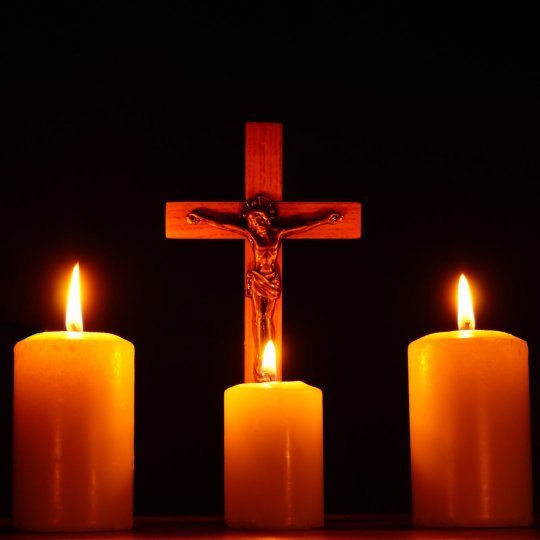
SAINTS JANUARY 19
St. Branwallader, 6th century. Bishop of Jersey, England. A part of his remains were translated by King Athelstan in 935.
St. Wulfstan, 1095 A.D. Wulfstan (1008-1095) A Bishop and reformer, also called Wulstan and Wolstan. Born at Long-Itch ington, Warwickshire, England, he studied at the abbeys of Evesham and Peterborough, received ordination, and joined the Benedictines at Worcester. Wulfstan served as treasurer of the church at Worcester, was prior of the monastery, and finally was named bishop of Worcester in 1062. After overcoming initial doubts about his ability to hold the office of bishop, he demonstrated such skill after the Norman Conquest that he was the lone bishop to be kept in his post by William the Conqueror (r. l066-l087). For the next three decades, Wulfstan rebuilt his cathedral, cared for the poor, and struggled to alleviate the harsh decrees of the Normans upon the vanquished Saxons. Wulfstan died while engaged in the daily ritual of washing the feet of a dozen poor men. He was canonized in 1203.
St. Henry of Sweden. Henry was an Englishman of the twelfth century residing at Rome. In 1152, he was consecrated Bishop of Uppsala, Sweden, by the Papal Legate Nicholas Breakspear, who later became Pope Adrian IV. In 1154, St. Eric, King of Sweden, led a punitive expedition against the Finns in retaliation for their marauding activity into Sweden, and Henry accompanied him. Eric offered peace and the Christian Faith to the people of Finland, but they refused. A battle ensued and the Swedes won. Henry baptized the defeated people in the Spring of Kuppis near Turku. When Eric returned to Sweden, Henry remained behind, working to convert more of the Finns. To this end he built a church at Nousis, which became his headquarters. In time, Henry met a violent death on account of his love of God. A converted Finnish soldier named Lalli had murdered a Swedish soldier. After careful consideration of the facts and assiduous prayer, Henry imposed the penalty of excommunication on the murderer. Lalli became enraged and slew the saintly bishop with an ax. Henry was buried at Nousis, and miracles were reported at his tomb.
St. Fillan. A son of Feriach and St. Kentigerna, was also known as Foelan. He became a monk in his youth and accompanied his mother from Ireland to Scotland where he lived as a hermit near St. Andrew's monastery for many years, and then was elected abbot. He later resigned and resumed his eremitical life at Glendochart, Pertchire, where he built a church and was reknowned for his miracles. Various legends attribute the most extravagant miracles to him, such as the one in which his prayers caused a wolf that had killed the ox he was using to drag materials to the church he was building, to take the ox's place. Fillan died on January 19…
St. Nathalan. Hermit and bishop of Tullicht, best known for his miracles. A Scot born to a noble family near Aberdeen, he became a hermit and performed miracles during a famine. Later he became a bishop, and during one visit to Rome was consecrated by the Holy Father. He returned to Tullicht, where he built churches and conducted missionary activities.
St. Canute IV Martyred Roman Catholic king of Denmark, sometimes called Knud. The illegitimate son of King Sven II Estridson of Denmark, Canute succeeded his brother Harald III Hen in 1081. After marrying Adela, the sister of Count Robert of Flanders, Canute built churches and monasteries. In 1085, he planned an invasion of England, but the nobles of the court rebelled against him and forced him to flee to the isle of Funen. There, Canute, his brother Benedict, and seventeen companions were slain in the church of St. Alban Feastday Jan 19
STS. MARIUS, MARTHA, AUDIFACE AND ABACHUM, MARTYRS ON THE VIA CORNELIA, Marius and his two sons were beheaded on the Via Cornelia and their bodies were burned. Martha was murdered in a place called Nymphae Catabassi, thirteen miles outside of Rome. Jan 19
ST. GERMANICUS MARTYR OF PHILADELPHIA Jan 19
ST. JOHN, BISHOP OF RAVENNA St John was Bishop of Ravenna at a time when the whole country was being devastated by the war with the Lombards. He was a holy pastor, entirely dedicated to caring for the needs of his people and his church. Pope Gregory the Great’s book, “The Rule for Pastors” to him. He died in 595. Jan 19
1 note
·
View note
